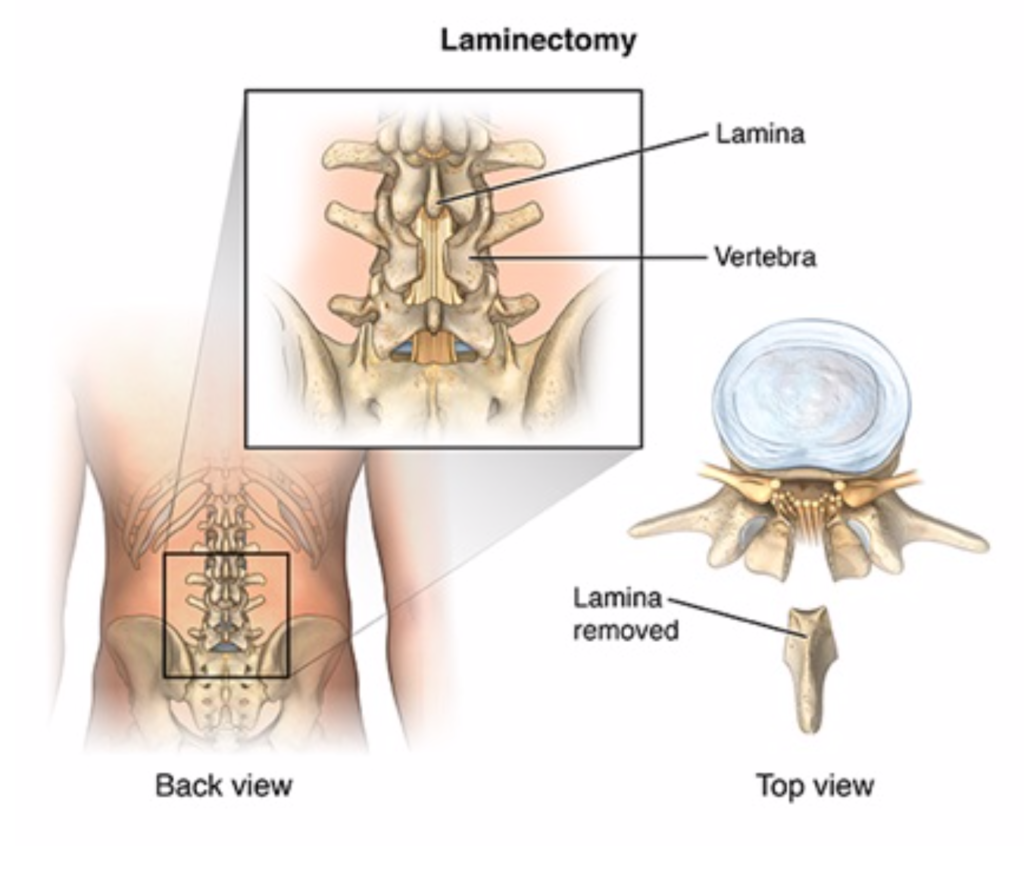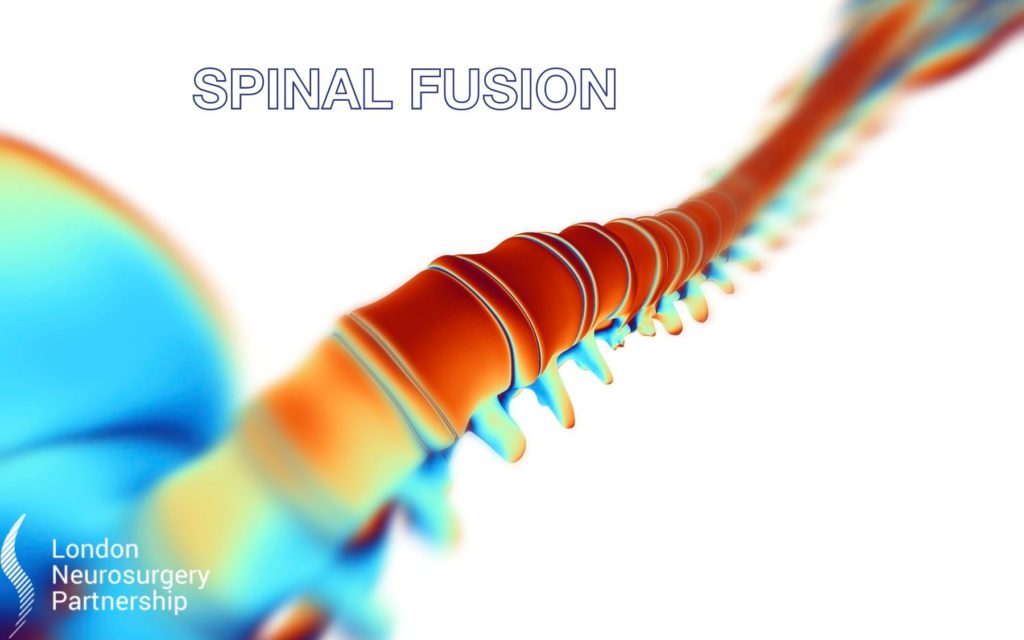
Laminectomy – complete removal of the lamina
What is a laminectomy?
A laminectomy is a type of decompression surgery used to relieve the pressure on your spinal cord or nerves. In the procedure the surgeon removes all or part of the vertebral bone (lamina). This helps to ease the pressure on the spinal cord or nerve roots that may be caused by injury, herniated disc, spinal stenosis or a tumour. The surgery aims to alleviate symptoms caused by the compression such as pain and numbness.
This treatment is offered when non-surgical treatments including medication, physiotherapy and spinal injection therapy have failed to relieve your back pain, and if you are an appropriate candidate for surgery.
What happens?
During a laminectomy you will usually lie face down on a special curved mattress to allow the surgeon better access to the affected part of your spine. The operation is carried out under general anaesthetic, which means you will be asleep during the procedure and will not feel any pain.
The surgeon makes an incision over the affected section of spine down to the lamina to access the compressed nerve. They will remove the bony arch of the posterior part of the vertebra (lamina) to ease pressure on the nerves in the area. This may involve removing bone spurs or growths, or removing all or part of a disc.
In some cases, spinal fusion may be done at the same time. During a spinal fusion, the surgeon will connect two or more of your bones in your spine.
To complete the operation, the surgeon will close the incision using stitches or surgical staples.
The whole operation takes at least one hour, but it may take longer depending on the complexity of the surgery.
 How to prepare
How to prepare
Before having surgery, you will have a pre-assessment in clinic. In this appointment the consultant may request the following tests; blood tests, x-rays and ECG (heart reading) to check that you are fit to have surgery.
Your consultant will explain to you how the surgery is performed and you will have the opportunity to ask any questions you may have.
Afterwards
On average patients will spend one to two nights in hospital. You may need to lie flat for three to four hours after surgery due to the effects of the anaesthetic. After this time, you should be able to sit up in bed. The following day you will be mobilised with the assistance of a physiotherapist or a nurse. However, it is advised to avoid strenuous activities for at least six weeks.
You should be able to return to work after four to six weeks, although this may be longer if your job involves driving for long periods or lifting heavy objects.
Risks and benefits
There is good evidence that laminectomy procedures in appropriately selected patients are effective for pain relief and improved function. However, as with any surgical procedure, there are potential risks, these include;
- Bleeding from the veins around your nerves is one of the more common risks.
- Spinal infection. The chance of developing an infection is very low.
- General anaesthetic. Your consultant and anaesthetist will inform you of the risks of general analgesia. If you are fit and healthy, your risks from general analgesia are very low. But is you have serious cardiac and respiratory problems your risks may be much greater.
- Damage to your spinal nerves or cord. Occasionally a nerve may be accidentally damaged or you may have some bruising of your spinal cord. These usually heal and recover. There is a very low risk of the surgery causing major cord damage or damage to the nerves which result in serious paralysis or loss of bowel and bladder function.
- Wound discomfort. You may have discomfort in the area around your wound following the operation. This settles after a few days in most patients.
This article is intended to inform and give insight but not treat, diagnose or replace the advice of a doctor. Always seek medical advice with any questions regarding a medical condition.





0 Comments